Klukkan er átta um morgun á leynilegum stað í Donetsk-héraði í Úkraínu og í felum undir tré er að finna sjúkrabíl ásamt þremur mönnum í herklæðnaði; bílstjórann Mukha, bráðaliðann Matthew og herlækninn Pegasus. Það heyrist kallað í talstöð og okkur er sagt að hoppa upp í bílana í snatri og elta þá sem kölluðu á ákveðinn móttökustað. Það eru fjórir slasaðir á leiðinni. Fimm mínútum síðar stöndum við með stórum hópi bráðaliða ásamt tveimur öðrum sjúkrabílum við kant á vegi sem liggur í átt að vígvellinum.
Eftir um tíu mínútur heyrist hávær vélargnýr í fjarska og stuttu seinna sést í brynvarið ökutæki koma á fullri ferð í átt að okkur með rykmökkinn í eftirdragi. Þeir leggja við hlið sjúkrabílsins og tvær lúgur opnast á afturhluta tækisins og út stígur hópur vígbúinna hermanna. Vélbyssur og annar búnaður er lagður á götuna meðan þeir styðja hver annan út úr tækinu …

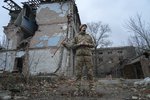
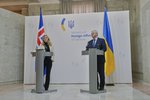

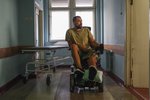









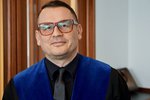


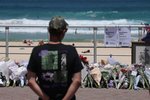














Giuliano, Elise (20 October 2015). "The Social Bases of Support for Self-determination in East Ukraine". Ethnopolitics. 14 (5): 513–522. doi:10.1080/17449057.2015.1051813. ISSN 1744-9057. S2CID 142999704. More dangerously, as the violence heated up, Kiev allowed semi-private paramilitary groups—such as the far right, neo-Nazi Azov Battalion—to fight in east Ukraine (Walker, 2014; Luhn, 2014).
Koehler, Daniel (7 October 2019). "A Threat from Within? Exploring the Link between the Extreme Right and the Military". International Centre for Counter-Terrorism. Archived from the original on 17 August 2022. Retrieved 8 April 2022. His own involvement in the militant extreme right movement predated his enlistment and Smith also was trying to join the neo-Nazi paramilitary Azov battalion and fight on their side in the Ukrainian conflict.
Mudde, Cas (25 October 2019). The Far Right Today. John Wiley & Sons. ISBN 978-1-5095-3685-6 – via Google Books. And in Ukraine, tens of thousands of far-right activists march through the streets of Kyiv, sometimes in torchlight processions, to commemorate old and new far-right heroes, including those of the neo-Nazi Azov Battalion, which fights against the Russian-backed occupation of Crimea.
Edelman, Marc (9 November 2020). "From 'populist moment' to authoritarian era: challenges, dangers, possibilities". The Journal of Peasant Studies. 47 (7): 1418–1444. doi:10.1080/03066150.2020.1802250. ISSN 0306-6150. S2CID 225214310. Just as hundreds of U.S. and European white supremacists joined Croatian paramilitaries fighting for 'ethnic cleansing' in the 1990s Balkan wars, the current training of foreign white nationalists in Ukrainian military units, such as the neo-Nazi Azov Battalion, points to..
.
McKenzie, Nick; Tozer, Joel (22 August 2021). "Fears of neo-Nazis in military ranks after ex-soldier's passport cancelled". The Age. Retrieved 8 April 2022. Mr Sretenovic was intercepted by ASIO and the Australian Border Force at Melbourne Airport in January 2020 bearing a ticket to Belgrade, Serbia. He later told supporters he was travelling to meet a girlfriend and Serbian relatives. But state and federal authorities, who had spent months investigating him, believed he was planning to travel to Ukraine to fight with the Azov Battalion, a neo-Nazi militia fighting Russian forces.
Allchorn, William (21 December 2021). Moving beyond Islamist Extremism. Books on Demand. p. 35. ISBN 978-3-8382-1490-0 – via Google Books. ...antisemitic and white-supremacist conspiracy theories circulated by openly neo-fascist and neo-Nazi groups, such as the Azov Battalion in the Ukraine...
Bacigalupo, James; Valeri, Robin Maria; Borgeson, Kevin (14 January 2022). Cyberhate: The Far Right in the Digital Age. Rowman & Littlefield. p. 113. ISBN 978-1-7936-0698-3 – via Google Books. The ascendency of a transnational global fascist terrorist network has drawn accelerationists seeking military training with openly neo-Nazi, white supremacist, anti-Semitic organizations like the Azov battalion, who recruited from...
Ali, Taz (19 March 2022). "Ukraine could follow Afghanistan into years of turmoil as West follows 'mujahideen model'". i. Retrieved 8 April 2022.